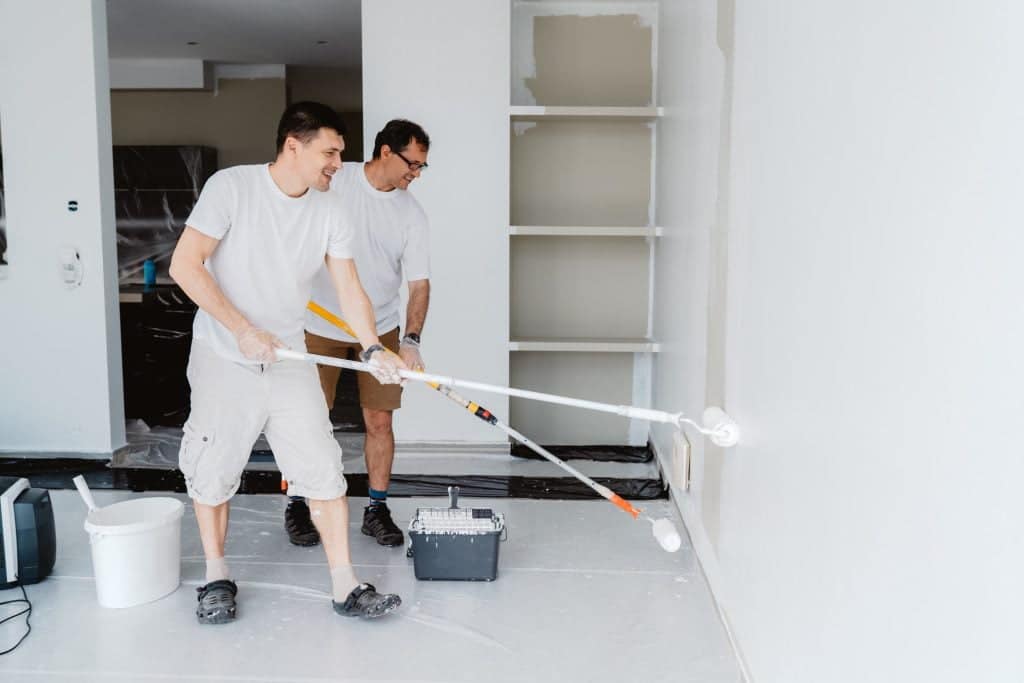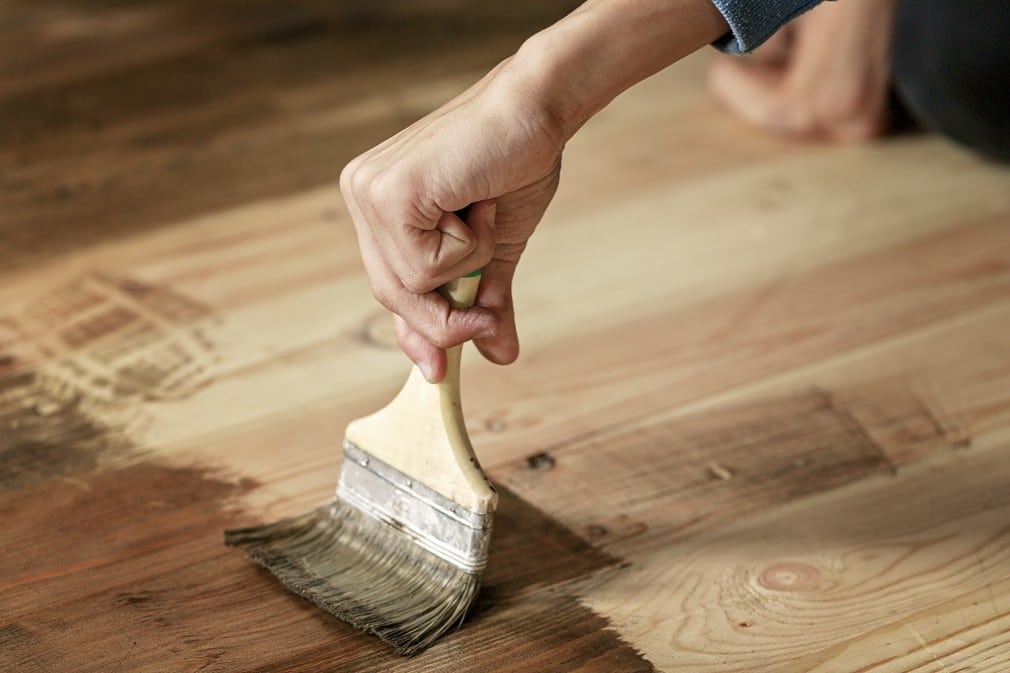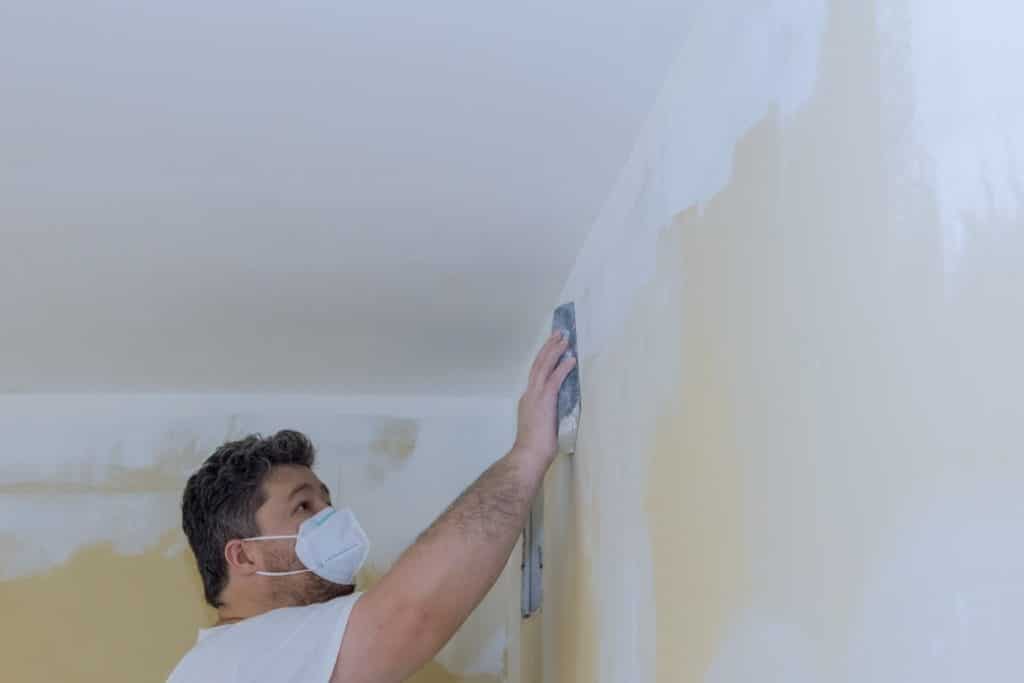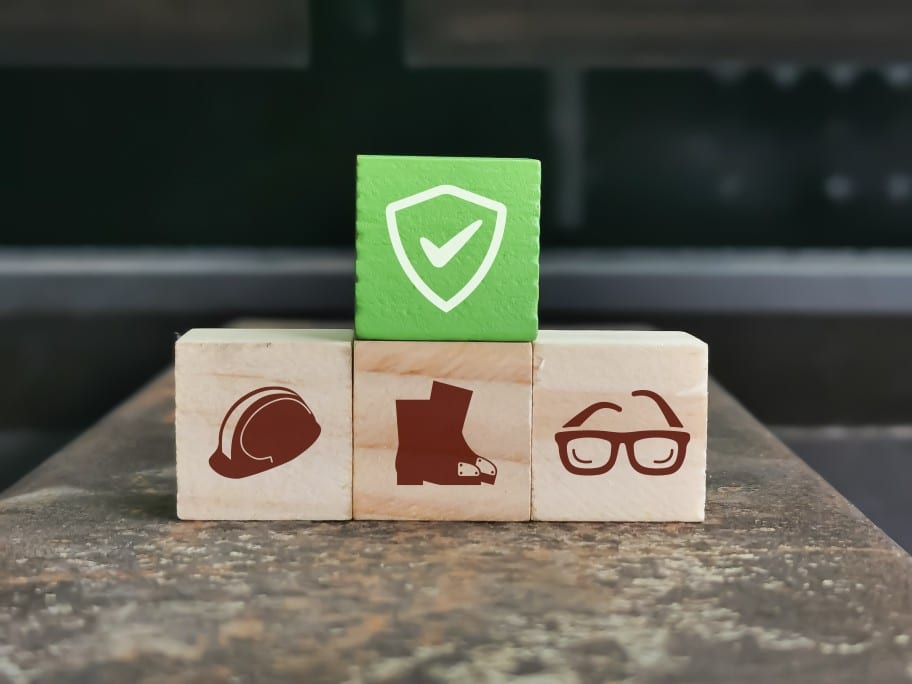[ad_1]
Painting a house can be a tremendous, tedious, and costly job, especially if you consider that you’ll have to choose colors for your interior and exterior and ensure that the paint job will be the perfect one for your house.
The secret to achieving this is breaking down the project using a stepwise problem-solving approach. This article covers the various cost to paint a house, no matter the size and the area to be painted.
The Typical House Design:
When determining the cost to paint a house, you first need to consider what areas you’ll be painting. You have the interior and exterior, which have various painting surfaces be it wood or concrete.
The size of the house matters as it may be an average of 1700 square feet or more. It may also be more than a story tall, with a standard 10-foot span for each level.
The house may incorporate different painting methods, paints, and designs, which all have additional costs. The labor input in painting a house also varies significantly with the factors discussed in this article.
The paintable surfaces also differ from house to house since the windows, doors, and other surfaces you won’t paint vary. The average door size is 20 square feet, while the average window size is 10 square feet.
How to Calculate the Paintable Area of your House
While many articles give a rough estimate of the cost to paint a house, there is little you can do to get a more accurate figure except by relating the average prices to your home.
The method for calculating the area of a wall is the length multiplied by the width of the same wall in linear feet. This will give you the area in square feet.
1. For your house’s exterior:
Measuring your house’s exterior might be a little complicated. This can be done using a few mathematical formulas for the gable ends of the house and any other intricate shapes.
A gable house
For the gable end, the area of the triangle can be calculated by multiplying the triangle’s height by the length of the base of your height. This can be added by the height of your house’s sides multiplied by the house’s length.
Alternatively, you can measure the greatest height of your house from the bottom and add it to the height at the corners, then multiply the result by the length of the midpoint of the house. This is the area of the trapezium that a gable house forms, and since there are two, multiply the result by two.
Subtract the area of any doors and windows to get the total paintable surface.
A two-story house
For a two-story or multiple-story house, the average height of a story is about 10 feet, so this should be your vertical height for each story. The total vertical height multiplied by the length at the bottom gives the area of the face of the house.
You can alternatively multiply the total height by the perimeter of the house. The whole area minus the windows and doors give you the total paintable surface for the multiple-story house.
2. For your house interior:
Measuring your interior walls should be an easier task. Since most faces are basic shapes, you do not need as much equipment and calculation.
The linear measurements of the length and height of walls in each room multiplied together give the total area of the walls. When you remove the area of the windows and doors and then total the area, you will get your total paintable surfaces.
To measure your ceiling, you can measure the length and width of the area above the baseboard, equivalent to the ceiling. It should be easier to give a rough estimate rather than measure the ceiling itself.
3. For the linear measurements:
While most parts of your house are measured in square feet, there are some that you will have to measure in linear feet. Some of them include:
- The trim
- The baseboard
- The gutters
Linear feet are a one-dimensional measurement and are the number of feet along a straight line.
Factors Influencing the Cost to Paint a House
Similar painting projects may cost different amounts, even for the same house size. This is because various factors affect the final quote or price.
Before painting your house, it is essential to consider these factors and allow a margin of variable costs in your final calculations. Some of them include:
- The location of your house
Because of the higher demand for labor and the higher cost of paints, painting a house in the city is more expensive.
These are some of the most expensive places to live in society. It will be less costly to paint a house in the suburbs or the countryside.
Airless sprayers may require using twice as much paint as brush and roller application to get the same level of coverage. To get the same coverage as two coats of paint, you should expect to pay between $100 and $400 for the machine and between $40 and $100 per day to hire it.
If you’re doing your painting, it’s crucial to know if renting or purchasing a paint sprayer is more cost-effective for you.
- DIY or professional painting
The cost of painting your house depends on whether you undertake the work yourself or employ a contractor. Alternatively, you may hire a pro to paint the exterior while doing the interior work.
Painting a two-story house necessitates numerous safety precautions, including the use of scaffolding in addition to ladders.
DIY painting saves money by eliminating the need for professional painting services, which typically account for most of the total project cost. In other words, DIY painting isn’t necessarily cheaper because you may spend the same or more on equipment than it would cost to pay a professional to do it for you.
Caulking and patching damaged walls may cost extra. Remove all peeling and damaged paint.
It costs $3.50–$10 per square foot to remove paint. Brick surfaces cost more because of the cleanup required.
Removing lead paint costs $8 to $16 per square foot.
Painting a new house costs less because there’s less prep work and cleaning.
The type of surface to be painted dictates the kind of paint, volume, and manner of painting. Different materials can be used to build the house, resulting in varying painting expenses.
There are a few of them:
Brick: To save money on paint, thicker masonry paint is needed for brick, which has a particularly porous surface. Painting a square foot costs between $1.50 and $4.50.
Painting a 250-square-foot area with one gallon of paint is among the most expensive materials. Priming the surface is necessary if you want to use less paint and have it adhere better to the surface.
Concrete: Like brick, concrete is porous and necessitates priming. Including a primer, painting a square foot costs between $2 and $7.
Consider the fact that many porous surfaces necessitate the use of more than one layer.
How Much Does it Cost to Paint a Brick House?
There are different things to consider when discovering the cost to paint a house such as different textures.
The natural textures created by the bricks give brick houses an abstracted appearance. Bricks can be painted in various colors to give them a unique look and enhance consistency.
The unique nature of brick surfaces makes painting brick homes seem like a time-consuming endeavor that requires various techniques and costs.
In comparison to other painted surfaces, bricks require more thorough prepping. Because of their larger pores, bricks are more likely to collect dirt and debris and even be colonized by plants.
Unlike other materials, brick requires more paint to cover the large pores and irregular surfaces. A primer and filling in any holes or cracks on the brick surfaces can make this easier.
It is, therefore, more involving and may cost more to paint a brick house.
Steps to Painting a Brick house
- The brick surface must be cleaned to remove any dirt or plants that may interfere with the paint job.
- Any damaged parts, like cracks, holes, or missing bricks, must be fixed before painting.
- Due to its porous nature, a brick surface must be primed to create an even surface for painting.
- After priming, the brick surface is ready for painting.
Cost Breakdown
Since we now know what is involved in painting a brick house, we will break down the various ways the cost could vary.
- Prep work
Painting a brick surface required a lot of labor input. You can do the prep work to reduce the cost of having a professional paint the brick.
Labor takes up most of the cost when painting brick. The labor cost breakdown includes:
Removing previous coats of paint
The old paint must be removed before a new layer of paint can be applied to a brick house. The average price per square foot to remove paint from brick is around $1.6.
Scrubbing away the dirt and debris
Because of the large pores in brick, dirt and plant growth are common occurrences. For a good finish, exterior brick surfaces must be thoroughly cleaned to remove any dirt accumulated in the pores.
When cleaning brick, the most common method is power washing, but only to a limited extent. It may cost $35-$100 if you hire a contractor, and the cost may be included in the final paint quote.
Fixing damaged parts
Removing imperfections on the surface of brick to be painted is an important step that will save you money on paint that may fill in the cracks. It also reduces the chances of your paint coat peeling due to the expansion and contraction of the air pockets.
Any cracks or large orifices that could allow the paint to seep into the grout are caulked. A mason fixes any broken or damaged bricks before moving on to the next section of the project.
- Priming the brick surface
If you paint brick, you’ll need to use a primer. Filling in pores and evening out brick surfaces with primer reduces the amount of paint required, which:
- Saves paint
- Creates a smooth surface for the paint to stick to
- It prevents dirt from building up in the brick pores
- Stops plant growth on the brick surfaces as there are fewer holes for the roots to grow into
- Avoids the bubbling of the paint due to trapped air bubbles
As a result, if you want a coat free of lumps and blemishes, you should spend some money on primer. It is arguable whether you need primer when painting, but for brick, it is a must-have.
A gallon of primer costs between $7 and $15 and covers approximately 250 square feet. You can expect to pay $42–$90 for a single coat of primer on a 1500-square-foot surface and at least twice that amount for two layers of primer.
- Painting the brick surface
Regular paint or a good amount of primer will not be enough to cover the pores and create an even surface on brick because of its high porosity. Fortunately, brick-specific paints are available that are thicker and better able to adhere to the material’s surface.
Consequently, you’ll use fewer paints, primers, and labor overall. Several low-cost brick paints and techniques are available to help you save money on your project.
The cost of buying paint
You will need at least two coats of paint for a good finish on the brick. A gallon of masonry or brick paint costs anywhere from $20 to $80. About 250–400 square feet of paint is needed to cover a gallon of primer.
For a paintable surface of 1500 square feet, you will need about 4–6 gallons of paint and double if you will be painting two coats. This will cost you anywhere between $80-$120 or, in the high extremes, $120-$240.
The types of available brick paint
Paint comes in a variety of colors and for a variety of purposes. Your local contractor or paint supplier can help you choose the right paint for your project.
Due to the porous surface, thicker paint will need to be used to adhere to the brick surface and typically requires more coats than average. A mildew-resistant paint should also be considered for the brick surface in the future.
Due to the use of mineral spirits as a solvent, oil-based paints are more difficult to work with. It’s easier to keep them clean, and they last longer.
Water-based latex paints are less expensive and easier to use than oil-based paints. Fast drying and low VOCs make them less toxic than oil-based paints, which are more hazardous to the environment.
Acrylic paint costs $20-$50 per gallon, while oil-based paints could cost $100-$150 per gallon.
Painting techniques
There are various ways to give your brick surface a good look without compromising cost. Most of the options are typically around the same price range, and if you want a unique surface, you could go for any of these:
Staining brick costs $1-$4 per square foot.
Chalky, white, or tinted finishes can be achieved by applying this mixture of water-soluble lime and sodium chloride to the brick. This exposes a portion of the brick to create a vintage-looking effect.
This method of painting costs about $0.80 per square foot.
This method of painting brick allows for both painting and preserving the brick’s texture. After diluting the paint, it is applied to the brick surface and allowed to dry.
The cost per square foot is between $0.89 and $1.6.
How Much Does it Cost to Paint the Exterior of a House?
You and visitors will initially look at your home’s front. It’s important to maintain the façade’s beauty. This includes the house’s front, entry, gutters, and walls.
Although this project seems costly, this article breaks down the costs and offers tips for updating your home’s exterior within your budget.
The cost of painting a house’s exterior
The total cost of painting the exterior of your house depends on:
- The type of paint
Exterior and interior paints have distinct formulations. They cost more and have more pigment and binders to last outside.
Flat or matte, semi-gloss, and gloss are available in solvent- or water-thinned compositions.
- Oil-based paints cost $20-$70 per gallon. They cover more and endure longer, but they yellow and crack more.
- Mineral solvents cost $15 per gallon, whereas mineral spirits cost $8. Mineral solvents cost $10 per gallon, but odorless ones cost $15.
- Latex paints cost $20-50/gal. It’s eco-friendly and easy to apply to wood siding or trim.
- Acrylic latex paints cost $20-$50 per gallon. These are wonderful for vinyl and other shiny surfaces and attach well to vinyl siding.
You should use latex over latex and oil-based over oil-based. Oil-based paints are tougher, take longer to cure, and require cleaning solvents.
You should always prime-permeable surfaces like brick and concrete. Because the paint will stick more evenly to the surface, you’ll use less overall. Cedar sap can flow into paint and cause discoloration; therefore, priming the surface is necessary. Priming prevents this.
Primers reduce the amount of paint needed when moving from dark to light or light to dark hues. If you’re using oil-based paint, use oil-based primers.
Oil-based primers cost $20-$50, Latex primers $20-$80, and Shellac primers $20-60.
A gallon of primer covers about 225-275 square feet.
- The type of material being painted
Different exterior materials demand different paint kinds. These materials cost the following per square foot to paint.
- Wood- $1-$3
- Brick- $1.50-$4.50
- Vinyl $1.25-$4.30
- Concrete $1-$3.50
These materials require different paints.
- The price of additional features and coverage
Trim costs 1 gallon for every 6 gallons of wall paint. This can be computed with the window, door, and shutter areas, costing $1-$4 per linear foot.
Painting gutters cost $0.5-$0.7 per foot.
One gallon of paint covers 250-400 square feet. Multiply the amount by two to find out how much paint you will need for the exterior of your home.
Use high-quality exterior paint to provide a durable finish and go longer between painting jobs. Look for paints with lots of binders and pigments for the best quality and color.
A gallon of paint costs $30-$80 for 250–400 square feet.
How Much Does it Cost to Paint the Interior of a House?
It’s not just the paint job that adds value to your home; it’s how the paint interacts with every other color in the house. Adding color to your home increases comfort and beauty, and you can choose the colors.
Most individuals want to do this but don’t know how or where to start. This article explains how varied estimations and projects affect final costs.
The cost of painting the interior of a house
Interior painting costs depend on many factors. It costs $1.50 to $4 and $3 to $6 with the ceiling and trim.
If you DIY paint your house, you’ll spend the same amount on equipment and materials. The cost of painting the interior of a home is outlined in the breakdown below.
Designer brands can cost as much as $100 per gallon for a gallon of paint covering 400 square feet. As a result, you’ll have a better idea of how much paint you’ll need by knowing how much surface area you’ll be painting.
If you want to paint 1600 square feet, you will need 4 gallons of paint. One coat of paint can be purchased for between $60 and $180, but two coats of paint can cost between $120 and $360.
If you’re painting over porous material like brick or concrete, you’ll want to prime the walls first. Adding a primer to the walls ensures that the paint will stick and last a long time.
Pores in the paint will trap air bubbles, then expand and contract in response to temperature fluctuations, ruining the paintwork. They also absorb more paint due to their uneven surface, resulting in higher paint costs.
A gallon of primer can cover 200–300 square feet of the surface. It costs about 10–20 dollars per gallon. A single layer of priming will cost between $80 and $160 for a 1600-square-foot surface that can be painted, and a double coat will cost twice as much.
As a result, you’ll be able to save money on your initial cost estimates.
There are a variety of paint brands, each with a unique recipe for its finish. For the most part, shiny paints are more expensive than dull paints.
In terms of price, the flat is $10-$93; satin is $11-$70; semi-gloss is $11-$68, and high gloss is $17-$71.
- The cost of painting the ceiling
Painting the ceiling is inexpensive, with an average price of $0.075 to $0.50 per square foot.
- The cost of painting the trim and baseboards
It is possible for the cost of painting the trim and baseboards to range anywhere from $1 to $4 per linear foot.
- The cost of custom interior painting
Interior painting jobs vary in design and paint needed.
Painting texture: Textured painting uses 50% more paint than other jobs. Texturing walls use 250 square feet per gallon instead of 400.
Texturing costs $4–$7 per square foot.
Murals cost $50–$150 per hour and $10–$20 per square foot, depending on detail.
Faux paint: It’s a decorative painting that mimics fabrics, wood, or granite. They cost $5-$10 per square foot and add dimension and beauty.
Different colors: Two-toned and accent walls may cost an extra dollar per square foot. Two-tone walls use two color palettes.
Each color of the same finish costs the same, so that you may have too much of one color. Two-color walls cost more to paint and separate because they require more equipment.
How Much Does it Cost to Paint a Two-story House
Considering how much it would cost to paint a two-story house might be intimidating. Complexities and inaccessible locations make the project challenging.
This article provides a rough estimate of costs and factors that may affect them. Consult your contractor or respected professionals for a project cost study.
How much would a two-story house painting cost?
The cost of painting a two-story house
The cost of painting the exterior of a two-story home ranges from $1 to $6. Inaccessible homes command a higher premium because of their inherent difficulty in construction.
The house’s exterior features the following items:
- $1-$3 per linear foot of trim
- ($2.45-$4.85) Fascia and soffit
- Shutters ($50-$70 per shutter)
- Per linear foot, gutters and downspouts cost between $1.66-$3.36.
Material, size, type of paint, and labor input influence these estimates.
How Much Does it Cost to Paint a House? Tips to Reduce your Spending!
Painting is pricey yet vital for a long-lasting home. There are ways to make it cheaper so you don’t have to empty your wallet.
| Tip | Explanation |
| Compare Quotes/Bids | Many contractors offer the same service at varying prices. The difference between expensive and cheap contractors is the finish. Finding a decent balance between cheap and luxury might be difficult. To look for a contractor, lookup for: 1. Referrals 2. Clients’ feedback 3. A certified professional 4. An insured contractor |
| DIY- The Bits You Can | Before hiring pros, do the preliminary work yourself to save a little cash. Cleaning, removing furniture, and other pre-painting tasks are included.
Where possible, DIY. Paint with it! You can’t paint your house’s exterior or huge rooms, but you can paint smaller rooms. |
| Ask For Help | DIY painters will need a spotter for ladders and other equipment. Follow safety precautions when painting with friends and family to avoid mishaps.
Hire an experienced handyperson to save money. Consider: Your neighbor charges $23 an hour to paint 1600 square feet, which will take 42 hours and cost $966. Hiring a pro costs $1-$4 per square foot and saves $1,600–$6,400 in labor. |
FAQs:
Is it cheaper to DIY-paint an interior or to hire a professional?
The cost of hiring a professional can vary massively when all things are considered, including everything from the initial work to the last touches. Here are a few examples:
Regarding cost per square foot, the price ranges from $2 to $6. Hourly rates range from $25 to $100.
Considering that labor contributes to more than half of the cost of painting a house, you may wonder about this. You’ll save a lot of money on painting if you already have the necessary tools and supplies.
How much does it cost to hire a professional for exterior house painting?
Painting the exterior of your house can be challenging, especially if you are DIY-painting and the house is complex. Hiring a professional may make it easier for you.
A per-hour painter costs $25-$75. Most painters charge per square foot, ranging from $0.50 to $3.50.
How much does it cost to paint a brick house?
It costs about $2-$3 per square foot to paint brick houses. Other extra features of a brick house may increase the cost, including:
- Chimney- $8-$30 per square foot
- Brick paint removal- $1.50-$9.50 per square foot
- Two-story house- $2.50-$3.50 per square foot
[ad_2]






